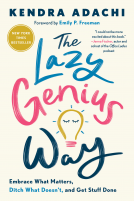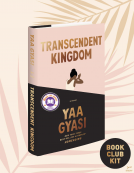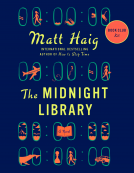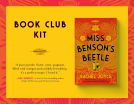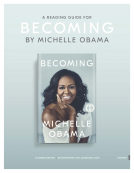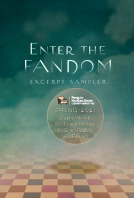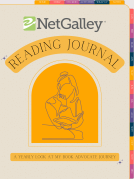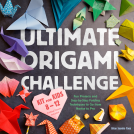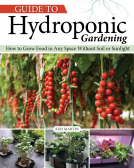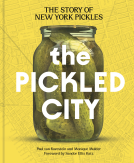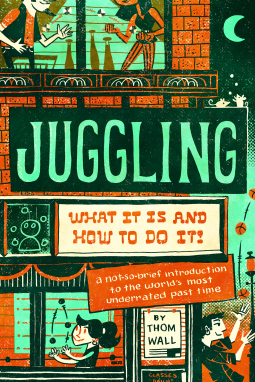
Juggling
What It Is and How to Do It
by Thom Wall
This title was previously available on NetGalley and is now archived.
Send NetGalley books directly to your Kindle or Kindle app
1
To read on a Kindle or Kindle app, please add kindle@netgalley.com as an approved email address to receive files in your Amazon account. Click here for step-by-step instructions.
2
Also find your Kindle email address within your Amazon account, and enter it here.
Pub Date Sep 30 2020 | Archive Date Sep 10 2020
Modern Vaudeville Press | Independent Book Publishers Association (IBPA), Members' Titles
Talking about this book? Use #Juggling #NetGalley. More hashtag tips!
Description
"Juggling: What It Is and How to Do It" is the result of six years of work by former Cirque du Soleil juggler Thom Wall. This book teaches learners of all ages how to juggle – one of the world’s oldest artforms. With a kind demeanor, humor, and enthusiasm, Wall explains the process of juggling through four different modalities, bolstered by the latest physical education research.
In a moment where people are spending more time at home, pursuing new hobbies and skills, Juggling is a timely and accessible primer that a middle-schooler can hit the ground running with, or that families can enjoy together. But make no mistake, this book isn’t child’s play. With guest chapters by some of today’s modern juggling masters, "Juggling" provides a wealth of content to span years of study for even the most serious adult learner.
A Note From the Publisher
Other Contributors: Benjamin Domask-Ruh, Fritz Grobe, Jay Gilligan, Matt Hall, Avi Pryntz-Nadworny
Advance Praise
"It’s not often that a piece of literature can speak to all levels of talent. Whether you’re a new juggler wanting to learn a 3 ball cascade, an experienced juggler needing to improve training organization & methodology, or a coach looking for more drills to help support their students’ progress. This book covers them all.
As an accomplished juggler, Thom knows how to execute his personal juggling strategy, but he is also one of the few who is able effectively transfer that knowledge in a clear and detailed format."
-Beau Sydes, Head Coach, Cirque du Soleil: Drawn to Life
"This book made me angry.
" I have been a professional juggler for over 35 years, and if I had read this book back when I started, I would have avoided many bad habits, learned proper technique, and had a more thorough understanding of site swaps, balance tricks, practice techniques, mechanics, performance, and much more. This book would have made me a better version of me. But the good news (for me) is that even for a seasoned pro, there are techniques in this book that I was able to adopt the day I read it.
"Thom Wall inspired me, challenged me, and taught me to be a better juggler, with the most clear and complete book about learning to juggle that I have ever read. If you want to juggle, or if you do juggle, at any level, you want this book. Read it, and become a better version of you.”
-Jon Wee, The Passing Zone
"Most juggling books take the same approach to learning basic juggling – that is, whatever method the writer used to learn. Juggling - What It Is And How To Do It, however, combines a variety of approaches, including siteswap notation, to offer the first fully comprehensive manual on juggling. No competing trade books employ siteswap notation, despite it being the primary tool in juggling instruction for the past two decades. There are also no serious books that provide in-depth discussions about posture and mechanics.
" Thom Wall presents his primer as a "learning" book more than a "doing" book," and this will delight both newcomers to the hobby as well as serious jugglers who want to absorb and perfect the art with a step-by-step survey of the basics.
"An overview of juggling history moves to working with three balls, understanding common mistakes and how to overcome them, and absorbing the vocabulary jugglers use to perfect their art, from 'reading' to balance. Specific information about the center of gravity in juggling balls, methods for predicting the way the balls will move, and drills for moving from beginning to more advanced juggling challenges cover both theory and operation in a book designed for jugglers who have the equipment (or are willing to craft their own props using the guide in the back of the book) and desire, but lack technique and basic learning approaches.
"Drills not only emphasize this technique, but comment on the emotional overlay involved in juggling efforts and practice: 'Work on your five flashes and longer runs while standing on a chair. (Work on the four ball drills this way, too!) Isolating your body in space will make you realize how much you’re relying on corrections, rather than perfect throws. It’s sobering, but don’t beat yourself up about it if you find it frustrating!'
"Also included are explorations of more difficult moves and why some may prove impossible, as concepts such as “fusion” are explored in a guest chapter by the legendary Jay Gilligan: "No one ever juggles 7 clubs with one eye closed, or does 5 club backcrosses standing on one leg. These would both be very hard tricks to do, but only because juggling culture does not count the variation of closing one eye, or standing on one leg as valid criteria for a trick. If closing one eye was accepted as something a juggler can explore to add complexity to a trick, then the technique of closing one eye would be spread and practiced, and eventually incorporated into the general technique pool that new jugglers learn. Closing one eye would then end up not being a novel or foreign idea and lots of jugglers could (more) easily do it. Fusion is motivated by these cultural observations and is the simple idea of choosing to join 2 body parts together and exploring that physical reality while juggling.
"Thom Wall's practical guide should be the first step in embarking on a practiced juggling career. It uses illustrations, physics, psychology, and other approaches to explain the approaches, purposes, and achievements of juggling. All this makes for a solid exploration that goes beyond simple tricks to thoroughly explain the science and actions behind juggling success and lays a solid foundation for anyone interested in getting on stage."
-D. Donovan, Senior Reviewer, Midwest Book Review
"Juggling suffers from many clichés. These clichés are so strong that they contaminate even the educational books about juggling. As a juggler, I suffer to see how the discipline I spent most of my life around is so disregarded and misunderstood.
"There are, however, a few books that really bring serious content. Thom Wall's book is one of them. But is not only a new serious book: it brings a holistic approach, by using solid scientific and historical foundations, by proposing global and modern views, so the reader can not only learn a few good tricks but understand why and how they are related so they can keep improving after reading.
"Juggling is so vast that no juggler can know everything about every specialty. That's why inviting top-end practitioners, as Wall did with the chapters by Jay Gilligan and Fritz Grobe, to complete the author's view is also very precious. Everything packed with a very clear and fun presentation makes this book a must-read for any juggler in the making—that is— everybody."
-Denis Paumier: director, teacher, company Les Objets Volants
"Juggling: What It Is and How to Do It is a complete, comprehensive, well researched, good humored, truthful and just plain fun to read.
"When I was learning to juggle in the 1970s, some of the references used in this manuscript were available, but certainly nothing like your book. For me, the key that makes it totally up to date and thoroughly modern is the detailed inclusion of siteswap notation. It's a book for NOW – for TODAY! …And as if that wasn't enough – it's FUNNY! I can't think of anything this book lacks. It’s structured it in such a way and heads off so many mistakes that could cost serious learners precious time. It's clear and rightfully keeps stressing that juggling is about developing the technique to make accurate throws and not about making spectacular catches. So many points stood out for me – the discussions of ethics and originality in particular. I love that the book touches on the work of Avner Eisenberg - being interested in what you are doing in performance rather than trying to be interesting. (From an acting perspective, you can not play a state of being like "being interesting". You have to make your actions active and not passive.) For me, any act is about having that "inner smile" which immediately ensnares the audience into sharing in your act. I like the props section as well – how to choose them or make them! So many books don’t reach this level of granularity and coherence.
"This is the new “classic” juggling manual, and will doubtlessly be translated into many languages!
"The difference between a student learning "old school style" and using "siteswap notation" as an aid is to me pretty dramatic. If you only teach 3, 4, 5 balls in succession, students become fixed in certain movement patterns. These patterns become habitual and become difficult to break out of. If, say, you want to try "Mills' Mess" you will need to go through the process of unlearning habitual patterns. But if you use site swaps as aids, you train your body to become accustomed to changing and being aware of having to throw balls at different heights and to different places and knowing each throw you throw and exactly where it goes. Site swaps are like learning scales on the piano. They might seem tedious but they are the only way to significantly continue to improve and keep the juggling alive and changing.
"
I think Thom Wall’s method is the best I've seen. I will certainly use it at Clown Conservatory.
"
-Judy Finelli, former president of the International Jugglers’ Association, co-founder of the San Francisco Circus Conservatory
Marketing Plan
Workshops at libraries, youth- and social-circus programs, online collaborations with youth groups and community service organizations pending (if interested, please inquire – contact Debbie Alnev at info@modernvaudevillepress.com).
Available Editions
| EDITION | Paperback |
| ISBN | 9781733971256 |
| PRICE | $25.00 (USD) |
Average rating from 13 members
Readers who liked this book also liked:
Silvia Moreno-Garcia
Historical Fiction, Literary Fiction, Sci Fi & Fantasy
Rachel Joyce
Historical Fiction, Literary Fiction, Women's Fiction
Publishers Lunch
General Fiction (Adult), Nonfiction (Adult), Teens & YA
Brian Soonho Yoon
Children's Nonfiction, Crafts & Hobbies
Sam Morrison
Children's Nonfiction, Crafts & Hobbies, Outdoors & Nature
